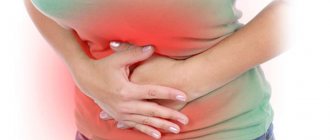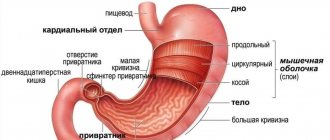We often say that something is bothering us in our throat, but not many people experience the feeling of a lump in the stomach. Moreover, no one wonders how the food lump ends up there. Basic knowledge of passing a food coma is necessary not only for general development. With their help, you can prevent complications in the gastrointestinal tract or provide the necessary treatment.
Intermediate stages of food passage
A person needs to eat several times a day to replenish energy and improve health. Before products release all their beneficial substances and provide energy to the body, they go through a complex path of change. The gastrointestinal tract takes on the task of converting foods into useful microelements. It consists of various devices that ensure the passage of a bolus of food through the alimentary tract. The entire digestion process can be divided into several stages:
- Formation of a food coma in the oral cavity. The process begins with food entering the mouth. Solid pieces are crushed with teeth, and the tongue helps to combine the mixed pulp into a common mass. In the oral cavity, on the right and left, there are several pairs of salivary glands that produce saliva. During the chewing process, the amount of saliva increases. It is necessary for simultaneous wetting and disinfection. The antiseptic effect occurs due to lysozyme contained in saliva. It also contains amylase and pitalin - enzymes responsible for the breakdown of complex components. Therefore, the separation of food gruel into carbohydrates begins immediately in the oral cavity.
- Movement from the throat to the esophagus. The muscles of the cheeks and tongue constantly contract, moving the formed bolus of food closer to the throat. Swallowing actions help push the lump into the throat, sending it further along the digestive tract. An important role is played by the epiglottis, which is located near the root of the tongue. It does not allow pieces of food to enter the respiratory organs when food gruel passes through the throat. The food gruel does not linger in the throat and goes straight into the esophagus. It is the epiglottis that shows her the right path.
- Through the esophagus to the stomach.
The esophagus is a long, vertical tube. Digestion is a complex process in which not only the stomach takes part; it connects the throat and stomach. Its diameter is 2-2.5 cm, height is about 25 cm. It does not take an active part in the digestion process, but serves as a connecting “segment”. The walls of the organ consist of three layers, which is very similar to the structure of the main digestive organs: - The first layer is the inner one. It contains a huge number of glands, each performing an individual function. The mucus secreted by the glands protects the organ from possible irritation from rough, spicy foods.
- The third layer is the outer one. The organ is covered with dense tissue with blood vessels. Their task is to supply blood to the digestive organs and nerve endings.
The second layer is the middle one. This is the “heart of the esophagus”, as it contains muscle tissue, including longitudinal, circular muscles. Thanks to the alternating contraction and relaxation of muscle tissue, the food bolus moves down the esophagus.
- On the way to the stomach. Food travels through the esophagus in a few seconds and enters the stomach. This is the main organ of the digestive system, responsible for thorough digestion. It is located diagonally from left to right and occupies the upper place in the center of the abdominal cavity. The upper part is located to the left of the middle of the body. He “feels” the imminent arrival of an energy source, even before the moment of grinding food in the oral cavity. As soon as we find ourselves near food, salivation involuntarily begins and at this moment the stomach produces the first portion of digestive juice, and we feel hunger pain and rumbling. The second portion is produced the moment the treat enters the mouth. By the time the gruel, crushed and formed into a lump, enters the stomach, it is completely ready to accept it. In an elongated bag, under the influence of digestive juice, crushed food particles are mixed and partially digested. After a long stay in the stomach, the food bolus passes further - into the duodenum.
Possible failure in the digestive system
The transformation of products during passage through the food tract is very significant. And if something goes wrong during the digestion process, the organs of the gastrointestinal tract immediately feel it: a stomach ache, a stabbing sensation in the left side, nausea. The reasons that provoke violations are very diverse: rapid swallowing of foods with air entrapment, fried, salty, hot, fatty foods.
Many are haunted by the feeling of a lump in the center of the stomach, belching. An unpleasant sensation is not always associated with a disease; most often the culprit is a physiological process (overeating, poor nutrition, medications).
Other causes of stomach discomfort
Similar discomfort occurs from hot bread. The gluten did not have time to cool or dry. When the pieces of dough enter the stomach, they clump together into one lump. The surface does not absorb moisture well - gastric juice, bread does not decompose into components and the feeling of heaviness persists for a long time. Taking medications in large quantities, especially those containing iron, creates a sensation of a lump some time after entering the stomach. Iron is poorly absorbed into the walls of the gastrointestinal tract.
When a person eats slouched, he compresses the stomach. The function of the walls to move the contents from the upper cardiac section further into the antrum and intestines is impaired. The feeling of a coma appears a few minutes after eating. You need to stand up and straighten your back. You can even slowly bend back. The discomfort will go away faster if you walk slowly. Do not bend over sharply or lift heavy objects.
A similar effect occurs in women during advanced pregnancy. The fetus grows and compresses the internal organs. Along with the feeling of a coma, belching appears. It is necessary to eat in small portions, giving preference to light foods. There is no reason to worry. After childbirth, the unpleasant feeling will pass.
The reason for the formation of a lump in the stomach under severe stress is involuntary muscle contraction. The body reacts to nervous excitement and the release of adrenaline into the blood with spasmodic contraction of muscle tissue. It is these long fibrous cells that make up the outer wall of the stomach. The movement of food stops. She remains in one place for a long time, becoming lumpy. Symptoms of coma are especially severe when a person is nervous while eating.
Symptoms
The feeling of a lump of food in the stomach (near the throat) is the most important symptom that cannot be ignored. This symptom does not come alone; it always has company. As a rule, it is accompanied by:
- Belching. Since the stomach is standing, regurgitation occurs quite often. The belching can be sour, with a taste of the food eaten. Sometimes the belching comes out with air or stomach juice. Shortness of breath may occur.
- Nausea, vomiting in the throat.
- Stomach ache. The intensity of the pain is different: on the left, in the middle, cutting, aching or stabbing. It hurts in the left hypochondrium, near the navel.
- Feeling of heaviness. The feeling of a stone in the stomach occurs due to a malfunction of the valve between the esophagus and the stomach, which affects the general well-being and functioning of the entire digestive tract.
Lump and heaviness as symptoms of gastritis
If the feeling of a lump - heaviness in the stomach appears frequently and their connection with food intake is traced, then you should immediately contact a gastroenterologist. Symptoms of gastritis vary depending on the type and area of the lesion. Common to all inflammations are:
- Heaviness in the stomach some time after eating.
- Belching with a sour or stale odor.
- Nausea.
- Pain in the epigastric region.
- Pale skin.
- Weakness.
- Constipation or diarrhea.
Symptoms appear gradually as inflammation develops. Heaviness in the stomach occurs more and more often. When you feel full, you belch and feel like there is a lump in the esophagus. Some of the contents are thrown back. You can roughly determine the area of spread of gastritis by the time interval between eating and the appearance of a coma. If severity occurs after 15–20 minutes, the cause is catarrhal gastritis. The defeat of the antrum is signaled by the feeling of a lump when food reaches the bottom of the organ and is ready to move into the intestines. This occurs approximately 2 hours after the meal.
The reasons for the feeling of a coma may be hidden in advanced forms of gastritis, forming thickening of the walls, polyps. The internal volume of the stomach is reduced. The balance in the production of mucus and enzymes by glandular cells is disrupted. The following types of gastritis are especially dangerous:
- Hyperplastic, with the formation of growths and thickenings due to accelerated cell division.
- Atrophic, when epithelial cells die.
- Polypoid with growths on the walls.
Symptoms of gastritis
If you experience a frequent sensation of a lump, especially if there are no obvious reasons for its formation, you should immediately consult a doctor. Gastritis, which has no symptoms at an early stage of development, quickly becomes acute and can lead to cancer. Causes of stomach disease and frequent lump sensation:
- Poor nutrition.
- Products of dubious quality.
- Fast food.
- Eating large quantities after fasting.
- Spicy and exotic dishes.
- Use of medications, especially painkillers and hormonal drugs.
- Chronic diseases, especially diabetes, pancreatitis.
- Drinking alcoholic beverages.
- Smoking.
- Nervous disorders.
- Great physical activity.
With gastritis with low acidity, the cause of the feeling of heaviness may be a lack of enzymes for processing food. Products are not broken down and remain in the stomach. Their fermentation begins with the release of gases, bloating and colic.
Causes
Overeating harms not only our figure, but also our health.
Pain in the left hypochondrium and a feeling as if there might be a lump in the stomach do not always occur immediately after eating, but after a short period of time. The reasons that provoke such a situation include:
- Overeating is one of the most common causes. Quickly swallowing poorly chewed food while swallowing air creates a large volume in the stomach. The walls of the organ are greatly stretched, hence the pain, nausea and sensation of stone. By adjusting your diet, the discomfort will immediately disappear.
- Physical activity immediately after a meal. Meals should take place in a calm environment, after which you should not exercise or do house cleaning. Bending over and tensing the abdominal muscles helps the stomach stop. This causes nausea, shortness of breath, and weakness.
- A stressful situation provokes a spasm of the stomach walls, causing pain, belching and a feeling of heaviness, rolling in waves from left to right. The cause is irritated nerve endings, both throughout the central nervous system and the nerve fibers of the stomach.
- Medicines containing iron. Patients are disturbed by a feeling of heaviness, air is belched, and stool is disturbed. Discomfort in the body goes away immediately after stopping these drugs and prescribing suitable treatment.
- Disruption of the gastrointestinal tract. Trouble can come from inflammation of the organ mucosa, which occurs due to poor nutrition and possible penetration of bacteria. Most often, the sensation of a coma is provoked by a tumor in the stomach. If your stomach hurts and you are worried about frequent nausea, shortness of breath, weakness, you need to be checked by a specialist and receive special treatment. Don’t delay going to the doctor – such a problem cannot always be solved on your own.
Diagnostic features
Visualization of stomach tissue will help establish an accurate diagnosis.
When you feel a lump in your stomach, you should not delay a visit to a gastroenterologist, even if the symptom is temporary. The doctor will find out where and how often the stomach hurts, as well as additional manifestations. To confirm the preliminary diagnosis, the patient is prescribed the following diagnostic procedures:
- laboratory testing of blood and urine;
- blood chemistry;
- ultrasound examination of the abdominal organs;
- fibrogastroduodenoscopy.
If it was not possible to find out the cause of the coma in the stomach, then an additional computed tomography may be performed.
Prevention
Is it possible to avoid the pain and unpleasant sensation of a stone in the stomach? Of course it is possible. To do this, you must follow the following preventive recommendations and the feeling of heaviness in the stomach will not haunt you:
- healthy lifestyle;
- correct daily routine and moderate amount of food;
- calm atmosphere during meals;
- fresh food;
- avoid salty, fatty, spicy, flour dishes;
- give up street cuisine (minimize eating fast food);
- quit smoking;
- do not drink alcoholic beverages.
Love vegetables and fruits, drink plenty of fluids (juices, mineral water), switch to lactic acid products (yogurt, kefir). Learn not to worry and face any stressful situation with a smile. After all, everyone knows that nervousness does not solve problems, but only undermines health.
Help with folk remedies
Many people are wondering how to relieve the condition when their stomach is upset, what to do? Folk remedies have come to the rescue more than once. To relieve discomfort, you can perform the following manipulations:
- self-massage;
- place a heating pad with warm water on the stomach area;
- perform several bends and squats.
Often the symptoms of indigestion strike at the most inopportune hour, especially at night, when the stomach refuses to work. What to do at home if the problem is urgent?
Chamomile infusion will cope well with unpleasant symptoms. Possessing antiseptic and bacterial properties, this folk remedy normalizes intestinal function, provided that the patient consumes it 3 times a day.
At home, you can brew an infusion, in which you add one spoon each of currant, gooseberry and blueberry leaves. Take the prepared drink three times a day, 15 minutes before eating.
Severe stomach pain and belching are well relieved by 200 ml of potato juice with the addition of a spoon of honey.
For preventive purposes, light fasting and drinking herbal teas are allowed if the stomach is upset.











